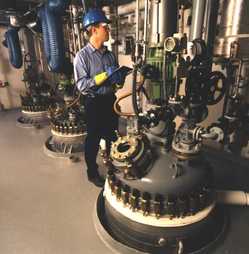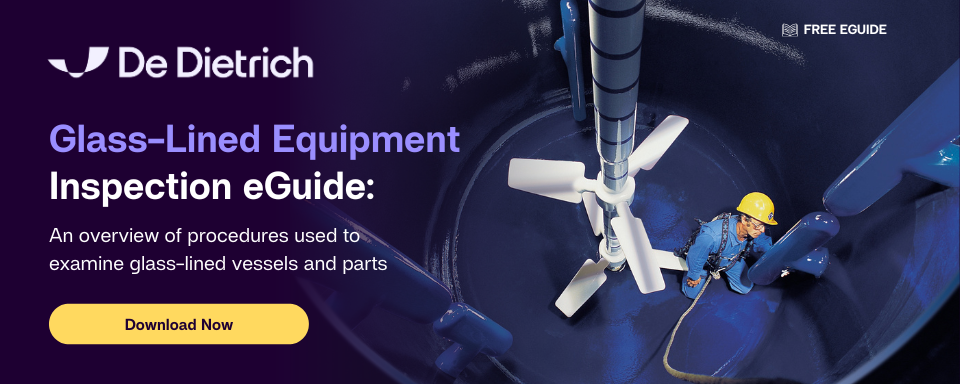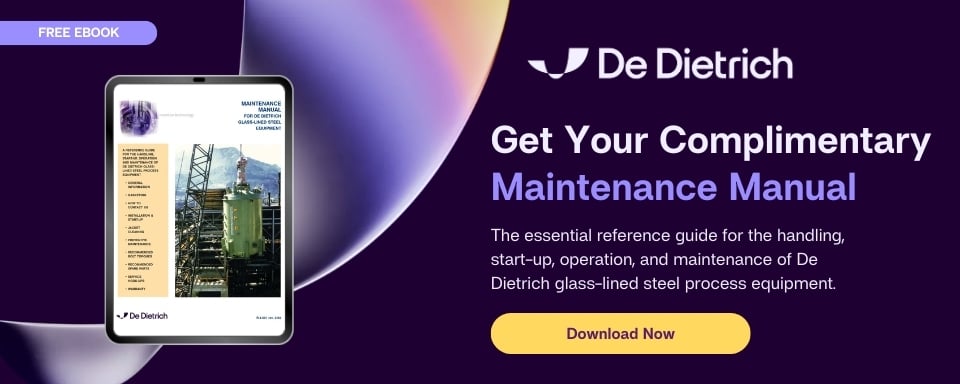Basic “DIY” Preventative Maintenance for Glass-Lined Equipment [Part 2]
 If you didn’t catch last week’s post, we talked about the importance of preventative maintenance with regards to glass-lined equipment and discussed some recommendations for inspecting the interior of your vessel. This week we’ll concentrate on the exterior of the vessel and the types of procedures you can do to ensure your equipment is in good shape and operating efficiently as well as look for potential issues.
If you didn’t catch last week’s post, we talked about the importance of preventative maintenance with regards to glass-lined equipment and discussed some recommendations for inspecting the interior of your vessel. This week we’ll concentrate on the exterior of the vessel and the types of procedures you can do to ensure your equipment is in good shape and operating efficiently as well as look for potential issues.
Even though it’s the first thing you see when you look at your equipment, the exterior of a glass-lined vessel is the most overlooked of any of the components. It is also one of the most important pieces of the equipment. Since it’s on the outside of the vessel, it is always available for inspection without any annoying process shutdown.
Exterior Surface
The exterior coating is there to protect the steel that the glass is adhered to, so if something is spilled on the exterior of a vessel it needs to be cleaned and neutralized as soon as possible. Depending on the chemical that was spilled, the area might need to be recoated for future protection.
Clamps
Clamps can also be inspected when you are examining the vessel exterior. Make sure you have the proper number and size clamps on all the manways. Again, make sure they are at the correct torque. (Refer to our Glass-Lined Equipment Maintenance Manual for more detailed information on torqueing).
Flange Connections and Gaskets
Inspecting all the flange connections on the vessel is extremely important. The most common failures on glass-lined equipment that lead to reglass are from flange damage that starts from the outside and works its way to the inside (a.k.a. edge chipping). Since the process does not have to be interrupted to inspect the vessel interior, it is also one of the most avoidable types of damage.
Checking the flange connections also helps you to find any gasketed joints that may be leaking. If a gasket is found to be leaking you should re-torque the flange bolts in accordance with the table in our Glass-Lined Equipment Maintenance Manual. If this doesn’t stop the leak, then the gasket should be replaced once the vessel is down. Never change a gasket while the vessel is in operation!!!
Agitation System
The agitation system should also be examined while you look over the exterior. The inspection should include the following checks:
- Examine the drive for any oil leaks.
- Check the seal housing for any sign of barrier fluid leaking out.
- Make sure you have the proper seal pressure applied to the seal housing.
- Make sure all the bolting is torqued to the proper spec.
- Check the shaft runout periodically to ensure that all is running properly.
Accessories (External and Internal)
It’s important to remember the individual components that are in and on a vessel. These parts need inspecting too, as any issues with them can result in damage to the vessel itself.
- Check all connecting accessories to make sure they are properly torqued and not leaking.
- Check the baffle bolting and the glass lining to make sure there is no damage. You also want to confirm it’s installed in the correct orientation.
- Check the agitator shaft and blades for damage. This can be done during the visual internal inspection and spark test. (Note: on our GlasLock blades you will need a 6Kv AC spark tester.) Check the rotation to confirm that the agitator is rotating in the correct direction for the process.
- Check the manway assist to make sure it’s working properly.
By following these basic steps on a regular basis, you can prevent premature failure to your glass-lined equipment. The time and investment in PM is well worth it considering the risk you take when you ignore the maintenance needs of your equipment. Inspection doesn’t require a lot of special tools and can usually be performed by someone inhouse. DDPS can also come on site and a service specialist can handle all of your preventative maintenance. Contact us to inquire more or schedule your service.
For more information on inspection frequency and additional details on procedures download our Glass-Lined Equipment Inspection eGuide and our Glass-Lined Equipment Maintenance Manual.

